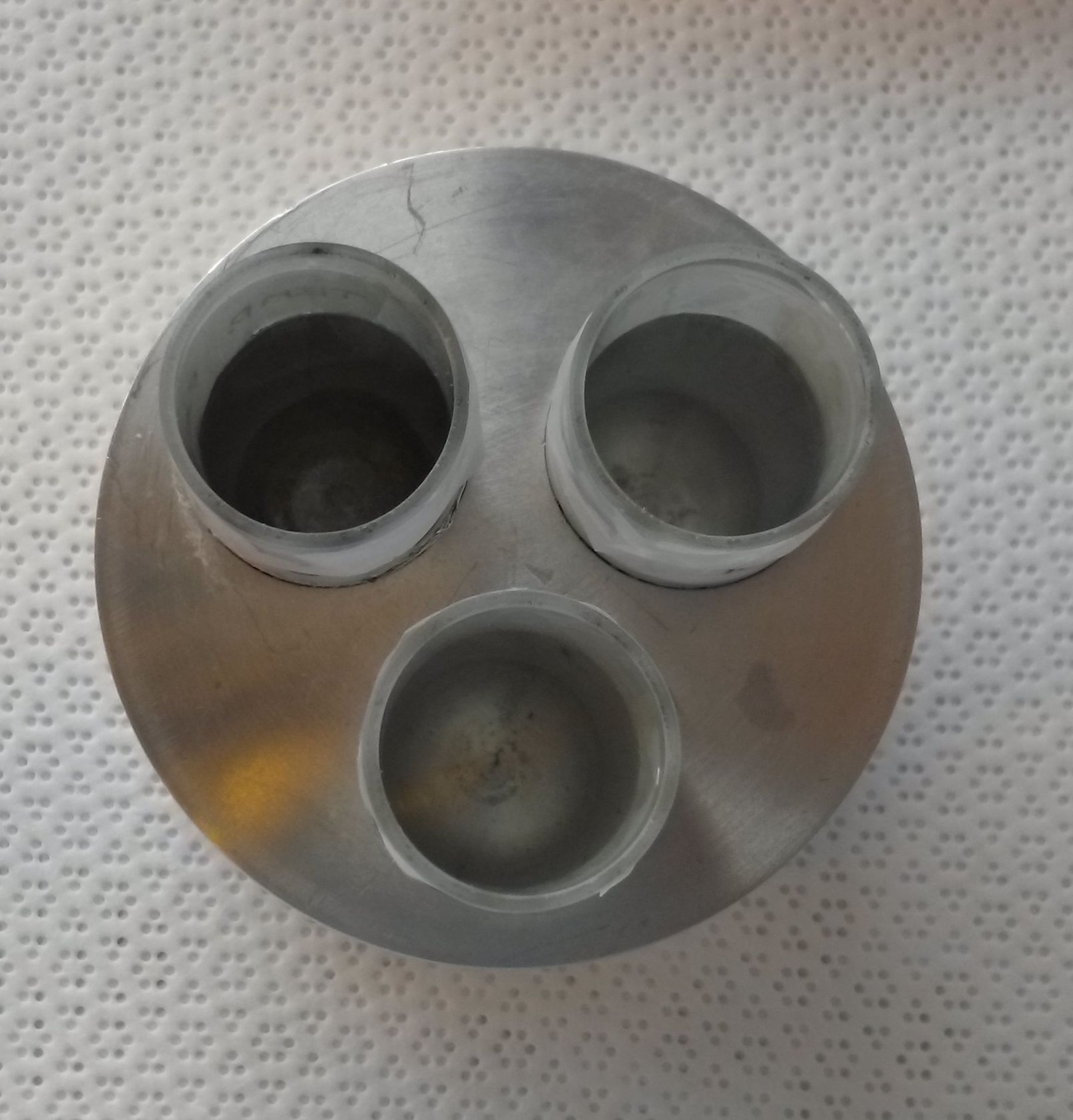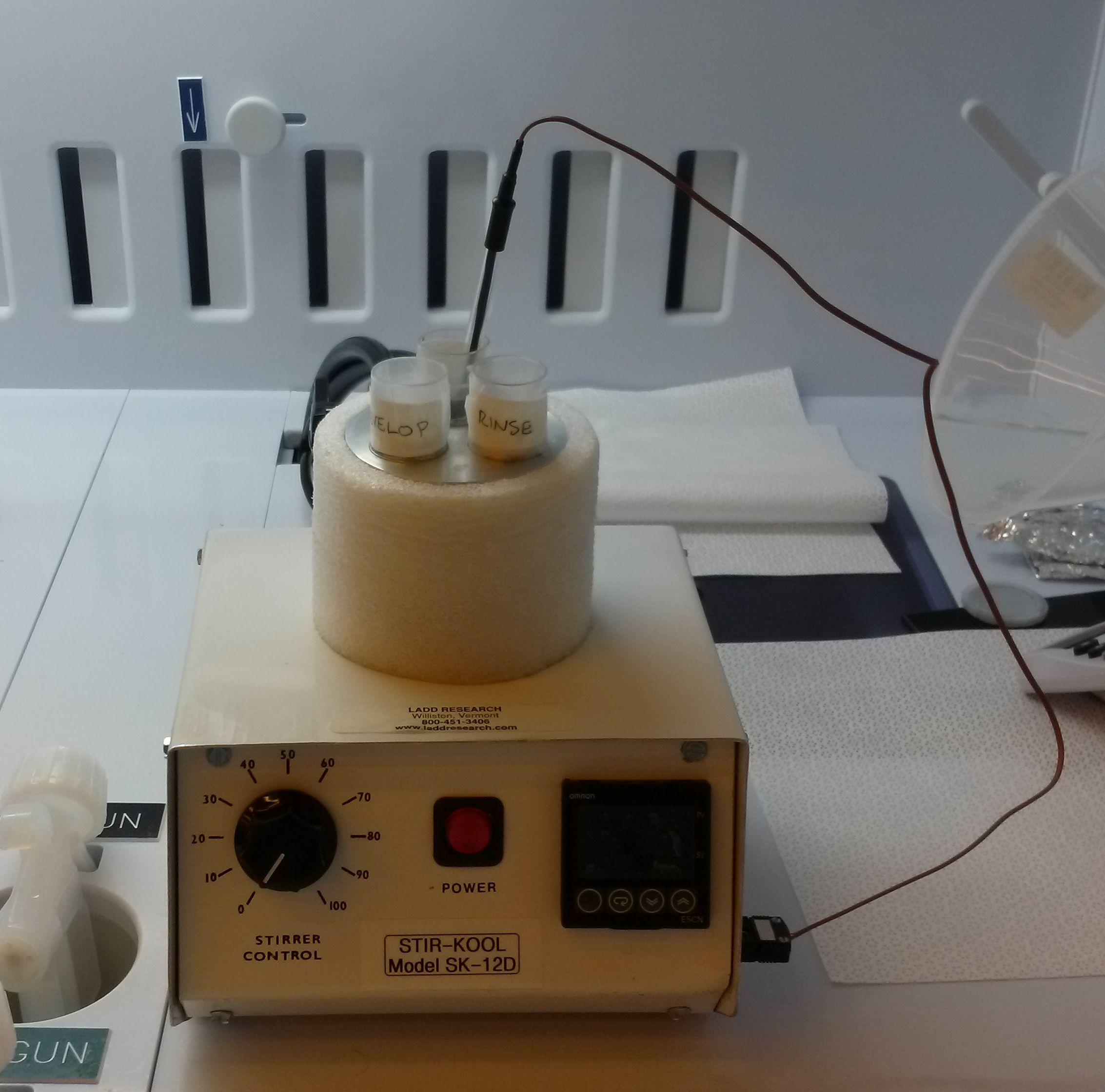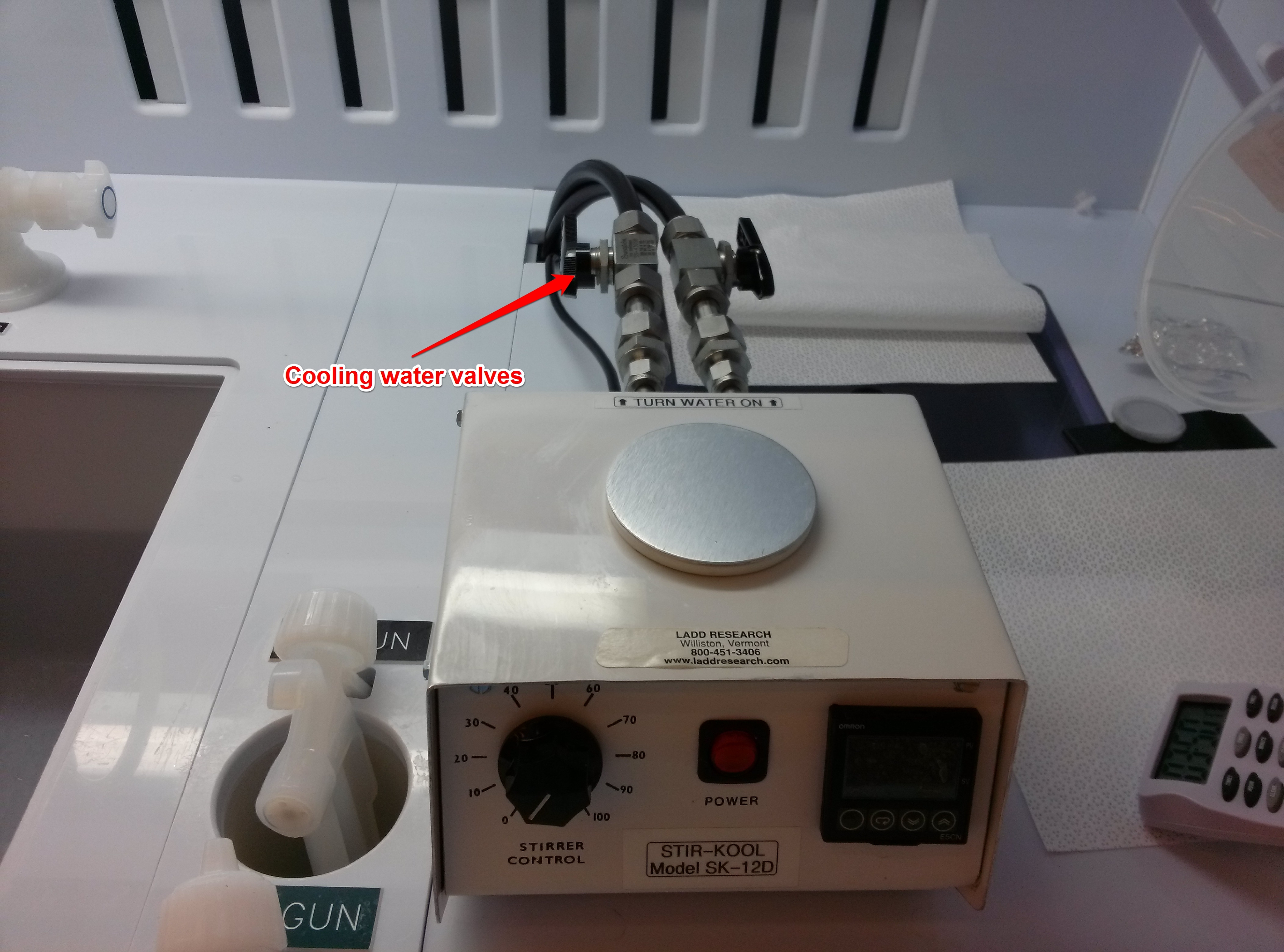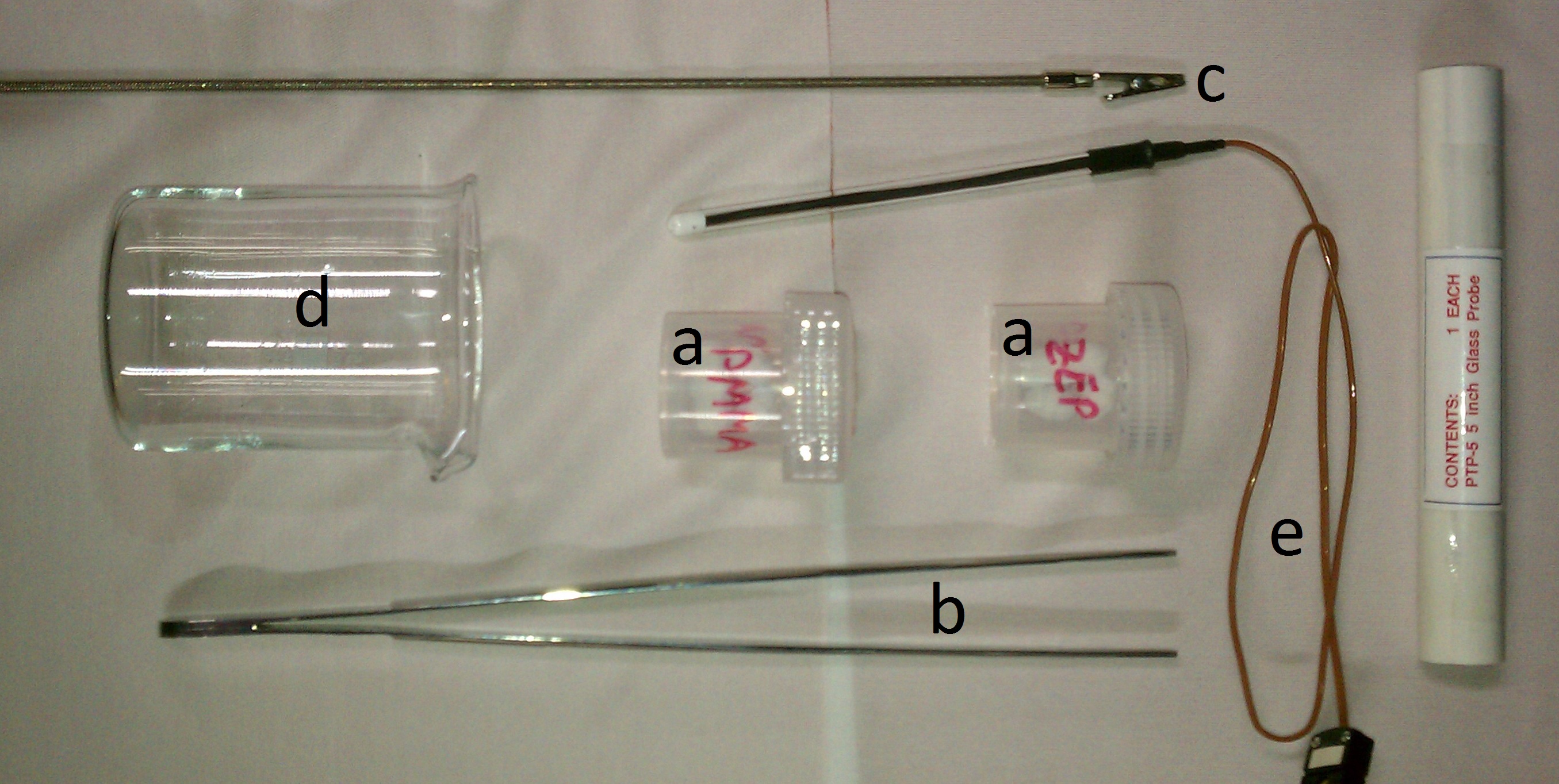- Stirrer beads (dedicated to PMMA and ZEP)
- Large tweezers
- Dipstick with alligator clip
- Aluminum-bottom glass beaker
- Aluminum test tube block with three test tubes (not pictured)
- Thermocouple probe in plastic tube container











| I | Attachment | Action | Size | Date | Who | Comment |
|---|---|---|---|---|---|---|
| |
|
manage | 255.1 K | 12 May 2015 - 13:52 | BryanCord | |
| |
|
manage | 188.5 K | 12 May 2015 - 13:53 | BryanCord | |
| |
|
manage | 323.7 K | 12 May 2015 - 13:53 | BryanCord | |
| |
|
manage | 2666.4 K | 12 May 2015 - 13:53 | BryanCord |